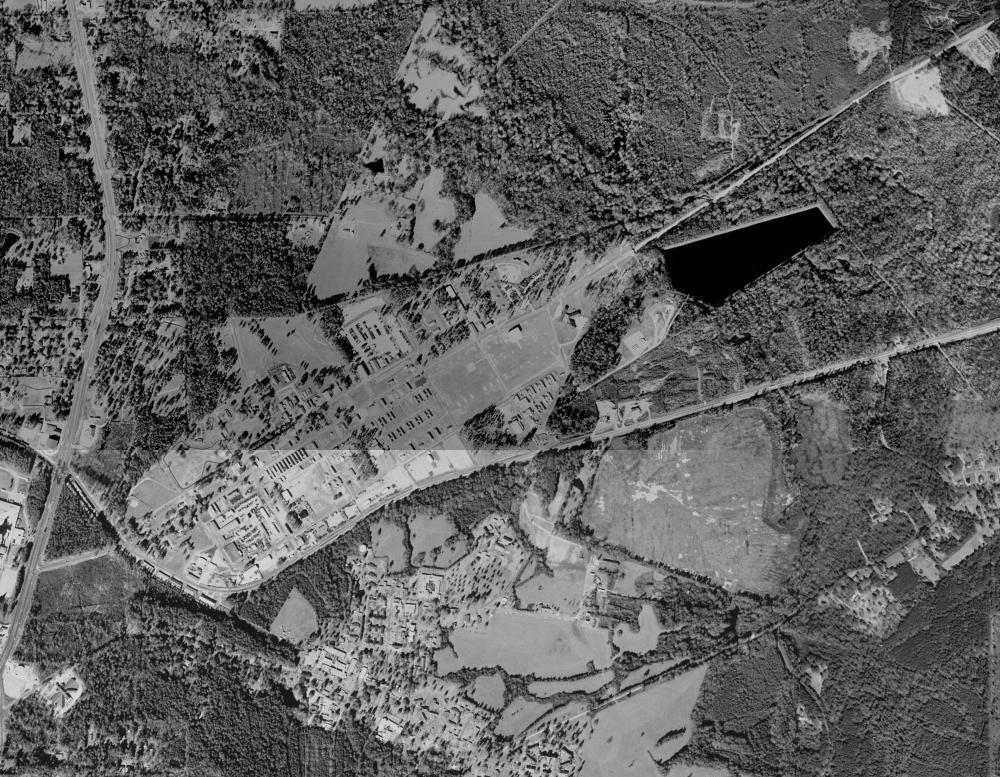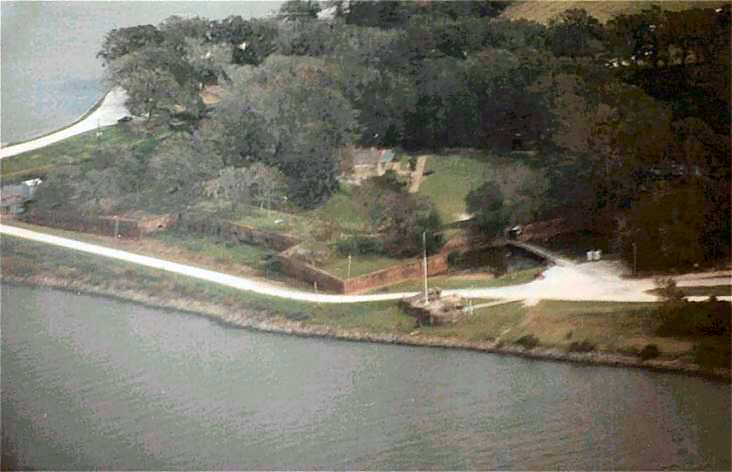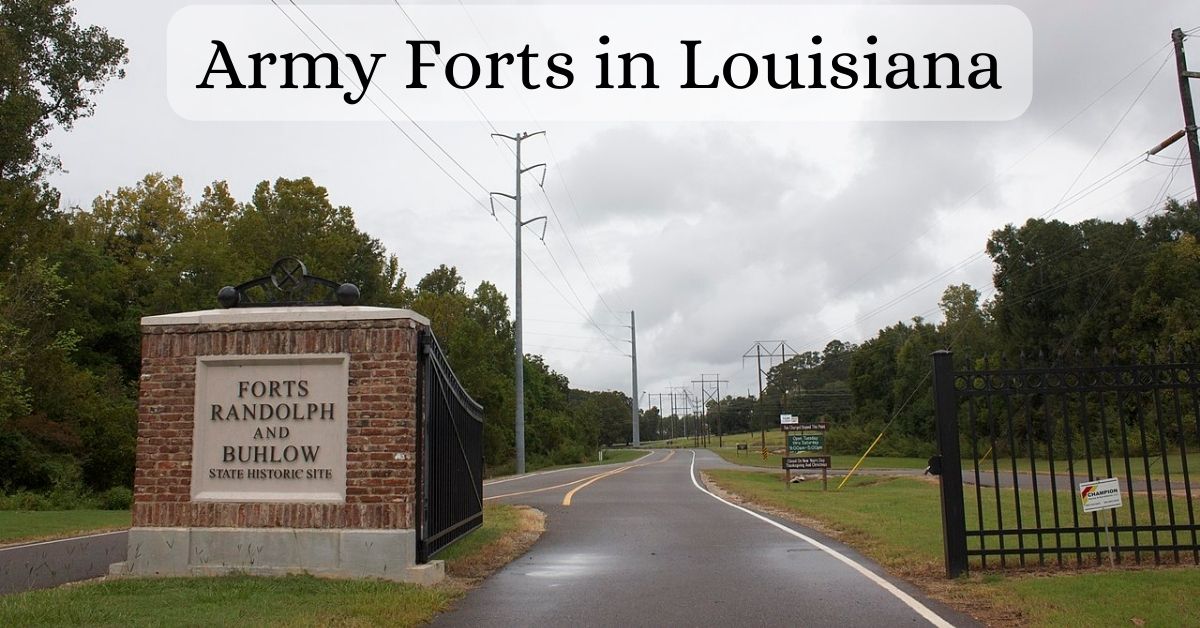Louisiana, known for its rich culture and history, has many military bases representing all five US military branches. These bases have diverse histories, some founded in the early 1900s and others established in the early 2000s.
In particular, Louisiana hosts several notable Army forts that serve essential roles in training and operations for the United States Army.
One such prominent Army installation is Fort Polk, located in Vernon Parish. This base is situated seven miles from Leesville and serves as a vital training ground for military personnel.
As we delve deeper into the topic of Army forts in Louisiana, we will explore their significance, contributions to national defense, and their relationship with the communities surrounding them.
History of Army Forts in Louisiana

Army forts in Louisiana have a long and storied history, dating back to the days of the Mexican War and the Civil War. Over time, these forts have evolved into modern military bases and installations, serving as critical staging areas for the US military.
From Camp Beauregard and Fort Polk to Fort Pike, Louisiana’s military installations have played significant roles throughout various eras of America’s history, such as World War II, the Korean War, and the Vietnam War.
During the Civil War, army bases like Fort Pike served as important stations for Union forces stationed in New Orleans. The city was a strategically important location, as control over New Orleans meant control over the Mississippi River.
The Confederate Army also had several installations in Louisiana, including Camp Beauregard, which saw significant action during the conflict.
Following the end of the Civil War, the role of Louisiana’s army forts expanded as the US military began to grow. With the advent of global conflicts like World War II, the Louisiana Maneuvers played a crucial role in training military personnel and preparing army units for deployment.
During Times of War
During this time, installations such as Camp Claiborne and Camp Livingston became essential to the war effort.
In more recent history, Fort Polk has emerged as one of Louisiana’s most crucial army bases, serving as the home of the Joint Readiness Training Center.
This modern military installation provides essential training and support services for active-duty personnel and has played a vital role in the United States Army’s ongoing operations.
Additionally, the Fort Polk Museum now seeks to preserve and showcase the rich history of Louisiana’s many military installations for military members and employees.
Today, Louisiana has various military bases, including army installations, navy bases, and the Louisiana National Guard. These facilities continue to serve the Department of Defense and the federal government, providing essential support services for the US military and local communities.
With such a proud legacy, it is no surprise that the Secretary of Defense and additional key officials have recognized the critical role that Louisiana’s military installations play in the defense of our nation.
List of Notable Army Forts in Louisiana
Louisiana has been home to numerous military bases and installations throughout history. Some of these forts have played critical roles in various wars and conflicts, particularly the Civil War, World War II, the Korean War, and the Vietnam War.
This list includes several notable army forts and bases that are important to map the history of U.S. military activities in Louisiana.
Fort Polk

Fort Polk is a United States Army installation located in Vernon Parish, Louisiana, serving as the home of the Joint Readiness Training Center.
It was established in 1941 as a training center for the US Army during World War II. This base has been important for the Department of Defense’s military preparation and training initiatives.
It was built during the Louisiana Maneuvers of World War II, an extensive military exercise conducted by the U.S. president and military leaders to prepare U.S. troops for overseas deployment. The Fort Polk Museum now showcases the base’s storied history.
The JRTC is a premier training center that provides realistic, complex, and challenging training to US Army units in preparation for deployment. The center is designed to simulate a realistic combat environment, complete with opposing forces, civilians, and other elements that soldiers may encounter in an actual combat situation.
Fort Polk is also home to the Warrior Training Center (WTC), which provides specialized training to soldiers in marksmanship, leadership, and combat skills. The WTC offers courses for soldiers of all ranks and specialties, from basic training to advanced courses for senior leaders.
In addition to its training mission, Fort Polk is a significant economic contributor to the surrounding communities. The installation employs thousands of civilians and military personnel and contributes millions to the local economy annually.
Fort Pike

Fort Pike is a historic military fort in eastern Louisiana, near New Orleans. It was built in the early 19th century to defend the city and the Mississippi River from foreign invasion.
The fort is named after Zebulon Pike, an American explorer who died during the War of 1812. It was completed in 1827 and was used by the US Army until the end of the Civil War.
During the Civil War, Fort Pike was occupied by Confederate forces and was used to defend New Orleans from Union attack. After the war, the fort was abandoned and fell into disrepair.
Today, Fort Pike is a popular tourist attraction open to the public for tours. Visitors can explore the fort’s barracks, powder magazines, and other structures and learn about its history and role in American military history.
Camp Beauregard

Camp Beauregard holds historical significance as it was initially used during World War I and II for training military personnel. It continues to operate today as a training site for the Louisiana National Guard. Its location in Pineville, Louisiana, near Baton Rouge, makes it an essential military base in central Louisiana.
It was established in 1917 and was named after Confederate General P.G.T. Beauregard.
The camp is used for various training exercises, including infantry and artillery training, as well as training for military police and other specialties. It is also home to the Louisiana National Guard’s Joint Force Headquarters and the 225th Engineer Brigade.
Overall, Camp Beauregard plays a vital role in the readiness of the Louisiana National Guard and the defense of the state and the nation.
It is a testament to the dedication and sacrifice of the men and women who serve in the National Guard and their commitment to protecting our country and our communities.
These army forts and installations have served multiple purposes, from staging areas for military actions to training centers for active duty military members and civilian employees.
These bases have helped shape the growth and development of military services in Louisiana, cementing the state’s importance within the broader scope of U.S. military history.
Strategic Importance of Military Bases in Louisiana

Geographical Location
Army forts in Louisiana hold significant strategic importance due to their geographical location. As a critical area of the Gulf Coast, Louisiana connects to the Mississippi River, which is vital for trade and transport.
Military bases, including army installations such as Fort Polk, home of the Joint Readiness Training Center, provide critical support for the U.S. military’s operations.
New Orleans’ proximity to the Gulf of Mexico makes it an ideal location for both navy bases and army bases, ensuring the protection of American interests along the southern coastline.
Louisiana’s geographic location also played a key role during historical conflicts, such as the Civil War, where the state provided staging areas for Union forces.
Military Contributions
Over time, Louisiana has demonstrated its value to the military services by hosting numerous military installations during various conflicts. From the Civil War to World War II, the Korean War, and the Vietnam War, these army bases have been essential in supporting the activities of the U.S. military.
For example, Louisiana Maneuvers were conducted in the central Louisiana region during World War II, directly involving over half a million U.S. troops. This massive exercise aimed to prepare the military for potential combat in different types of terrain.
Furthermore, bases like Camp Beauregard and Fort Polk have served as crucial training centers for military personnel across all branches. These army installations, under the Department of Defense’s supervision, have helped develop a highly skilled and adaptable military force over the years.
Famous Battles and Events

Many notable battles and events at army forts have shaped the state’s significance in various Louisiana wars.
One such event was the Civil War battle to control the Mississippi River, where Forts Jackson and St. Philip were critical military bases. These forts near New Orleans defended the vital port city from Union forces.
Another important event was the Louisiana Maneuvers, a series of large-scale U.S. Army training exercises during World War II. Camp Beauregard and Camp Polk served as significant military installations, playing pivotal roles in preparing U.S. military personnel for combat.
Notably, Louisiana was also home to one of the first black soldier units during the Civil War when the Confederate Army was defeated at Port Hudson. The self-guided tours at Port Hudson State Historic Site allow visitors to learn about the bravery and sacrifices of these soldiers.
During the Vietnam War, Fort Polk was the home of the Joint Readiness Training Center, a crucial training facility for Army units. The Fort Polk Museum commemorates its significance during this era and other conflicts like the Korean War and World War II.
Today, several military installations in Louisiana continue to serve the needs of the U.S. military, including the Louisiana National Guard and various Army bases such as Forts Polk and Pike.
The federal government and the Department of Defense ensure the readiness and support of military members, civilian employees, and their families living on these active duty installations.
Preservation and Tourism

Louisiana’s rich military history is showcased by preserving several historic army forts and sites. These locations pay tribute to key events such as the Civil War, Mexican War, World War II, Korean War, and Vietnam War.
Museums and Historic Sites
Forts Randolph & Buhlow State Historic Site and Fort Pike State Historic Site are among the popular army fort attractions in Louisiana, with Fort Pike previously serving as part of the defense system for New Orleans during the 19th century.
Meanwhile, Fort Jackson played a crucial role in the Civil War, defending the city of New Orleans and the mouth of the Mississippi River.
One of Louisiana’s most well-known army installations is Fort Polk, home to the Joint Readiness Training Center. The Fort Polk Museum exhibits the heritage of the United States Army and provides a compelling experience for military personnel and civilians alike.
Visitors can also explore Camp Beauregard in central Louisiana, an important military facility operated by the Louisiana National Guard.
Self-guided tours and visitor centers are available at many of these historical sites, offering more profound insights into the military events, army units, and key figures associated with Louisiana’s military past.
Annual Events
Besides the permanent museums and historic sites, Louisiana hosts several annual events commemorating milestones and celebrating the contributions made by the U.S. military.
This includes the brave black soldiers who served with distinction during the Civil War, World War II, and subsequent conflicts.
An example of such an event is the annual Louisiana Maneuvers & Military History Festival held in the Baton Rouge area, which brings together military enthusiasts for a weekend filled with reenactments, interactive exhibits, and presentations on the state’s military involvement throughout history.
This event aims to preserve and honor the sacrifices made by U.S. Army personnel, civilian employees, and their families.
Today, visitors to the area can learn more about the incredible stories and experiences of soldiers through self-guided tours at various locations such as the Fort Polk Museum or Fort Pike, both of which offer valuable insight into the lives of those who have served in the U.S. military.
Additionally, the contributions of military personnel and civilian employees continue to shape the communities surrounding these vital installations.
Conclusion – Army Forts in Louisiana
Louisiana has a rich history of military bases and army forts that have played critical roles in various conflicts, such as the Civil War, World War II, the Korean War, and the Vietnam War. Notable locations include Fort Polk, home of the Joint Readiness Training Center, and Camp Beauregard.
These military installations have contributed to the growth and development of Louisiana, particularly around cities like New Orleans and Baton Rouge. The Louisiana Maneuvers, for example, prepared U.S. troops for World War II. At the same time, the Department of Defense has maintained and strengthened the state’s military services for both active duty personnel and civilian employees.
During conflicts, various Army forts and bases, like Camp Polk and Camp Claiborne, were key staging areas supporting U.S. military members and the Central Louisiana region.
Military personnel and their families who lived in these facilities have benefited from essential resources such as DSN numbers and visitor centers that aim to ease their transition into life on base.
As the landscape of the U.S. military evolves, these historic army bases—including some now under the control of the Louisiana National Guard—serve as a testament to the state’s enduring relationship with the federal government.
From U.S. President Andrew Jackson defending New Orleans during the Mexican War to the brave black soldiers and Union forces positioned during the Civil War, Louisiana’s forts have been intrinsically tied to the United States Army and the nation’s military history.

Cory is a website owner and content creator who enjoys fishing, history, coin collecting, and sports, among other hobbies. He is a husband and father of four.
Romans 15:4 For whatever was written in former days was written for our instruction, that through endurance and through the encouragement of the Scriptures we might have hope.

